Longines first developed the 18.69 pocket watch calibre in 1895, and like their other movements at this time, by 1908 it was re-engineered as a thinner (7.75mm), slightly wider (39.75mm) calibre, becoming the 18.69N.
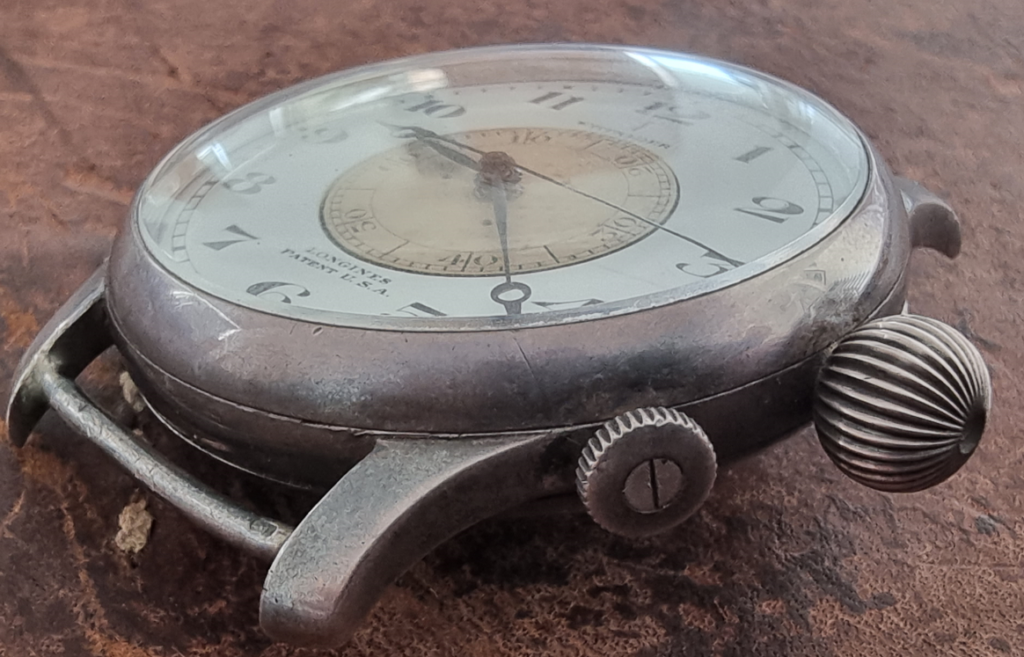
It also heralded the replacement of the pin set 18.69N with the introduction of the new 37.9 calibre which allowed independent accurate use of the second-setting mechanism with the auxiliary crown. The inner chapter ring on this transitional model was 21mm before being increased to 25mm. The dial acquired the text Patent U.S.A. above six and this is the very first time we see a reference to patent on the dial of the large 47mm Weems models.

The transitional no crown guard Weems highlights a rare insight in the evolutionary chapter of the one of history’s most famous pilot watches.
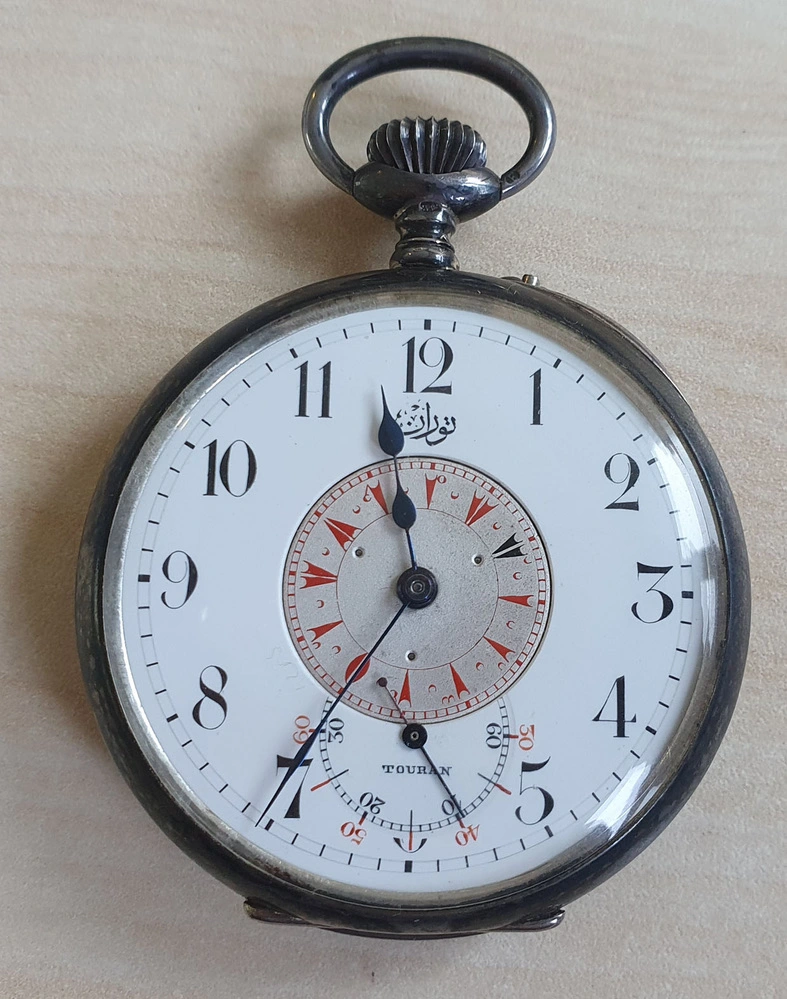
The very first prototype Weems watch used an 18.69N pin-set pocket watch movement that was originally destined for the Turkish market in a Duble tour D’Heure (dual time) turning inner disc pocket watch retailed by the Turkish agent Nacib Djezvedjian.
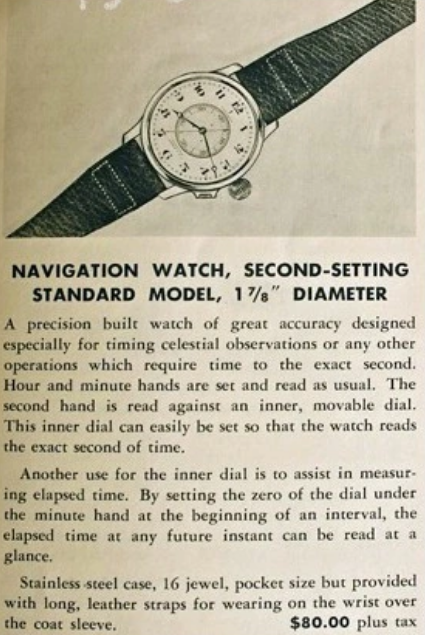
Whilst the very first Longines Weems Second-setting watch was not delivered till 30 November 1928, Longines archive records clearly note the repurposing of Turkish 18.69N pocket watch movements made more than a decade earlier for these first prototype pieces.
This included Weems actual watch (serial # 3585867), that now rests in the Smithsonian, and piece #2 (3585868).
Two Turkish dual time pocket watch models used modified pin set 18.69N pocket watch movements with extra gear wheels.
The first with an inner dial had two timezones with two sets of hands and the second pocket watch, signed Touran, also featured an 18.5mm turning inner chapter that mirrored the exact size of the turning disc of the prototype Weems pieces.
Both are essential formative pieces in the Longines 47mm Weems history and lie in the Longines Museum.
Whilst the large onion crown of the Weems and Lindbergh models enabled easy use with gloves, the pin set second-setting feature would be a challenge setting with gloves. Both of these pilot watches used robust pocket watch calibres for their entire production life.
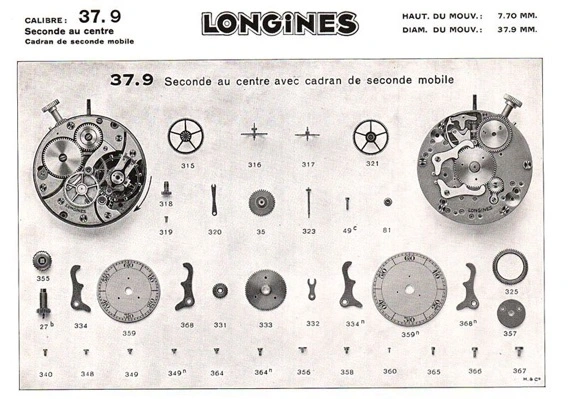
The large Weems model featured the pin-set 18.69N calibre up until the robust 37.9 order of February 1938. First developed in 1932, the 37.9 was 18 ligne and would be used until being replaced by the 37.9N execution of 1941-2. Old stocks of the 18.69N continued to be used in the Hour-angle model into the early 1940’s.
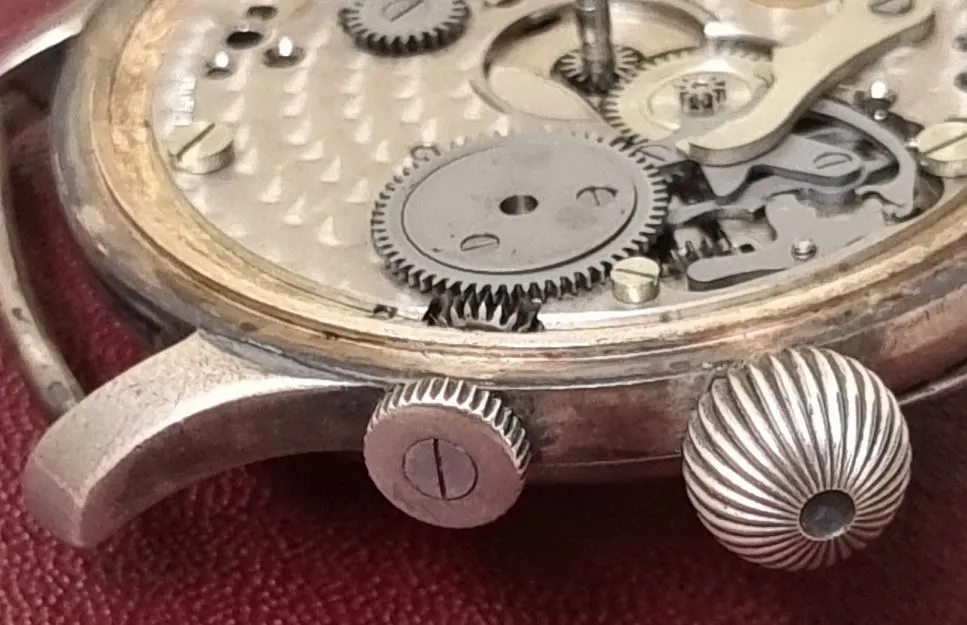
A second transitional 6mm crown at four was added to the second generation of the Weems model allowing easier, faster independent rotation of the inner second setting chapter. This was a transitional and experimental crown without any shoulder or guard protection. To date, the only known examples herald from the same February 1938 delivery.
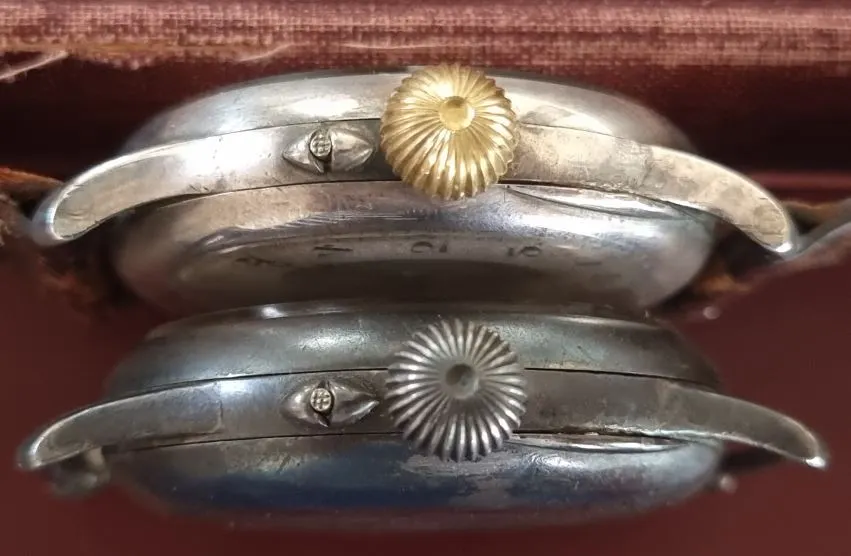
Much like the Omega and Rolex sports models that followed twenty years later, an improved version with shoulder guards protecting this second auxiliary Weems crown was introduced within months.
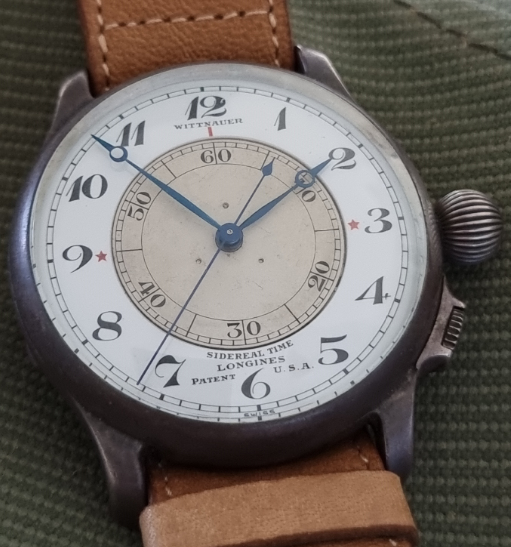
The number of known surviving examples with this transitional crown can be counted on a hand. One of these examples exists in the Longines Museum with an unusual reference number 4214 marked. To date, it appears to be the only known piece bearing this reference.
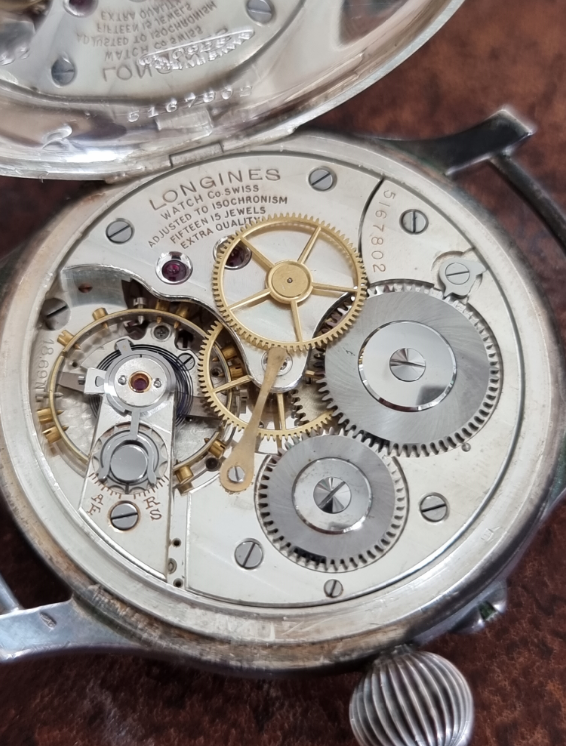
Two other examples, both reference 5350 with this special transitional crown were part of the very same order delivered to Wittnauer on 11 February, 1938 making them among the first known examples using the new 37.9 calibre. One was regulated for civil time and the other sidereal and this order appears to be the earliest known of the new 37.9 calibre.
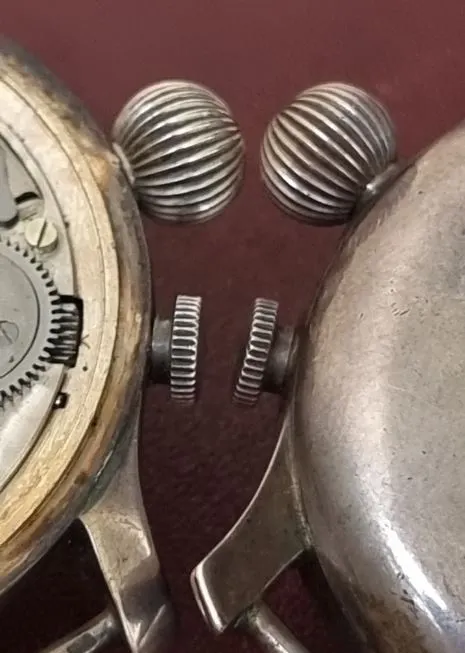
For the handful of known pieces, the movement was upgraded, essentially replacing the pin set pocket watch 18.69N. The Weems inner chapter ring remained 21mm, however the next known order in July 1938 adopted a protected crown and used a larger 25mm chapter ring. Longines movement schematics point to 21 and 25mm chapter ring sizes with the calibre 37.9.

Similarly, a Longines advertisement with an unknown publication date pictures a 37.9 guarded crown model with a 21mm chapter at this changeover juncture. To date, discovery of such an example remains elusive. Seemingly the transition to the new 37.9 movement, larger (25mm) more legible chapter ring and the new guarded crown happened simultaneously and almost immediately.
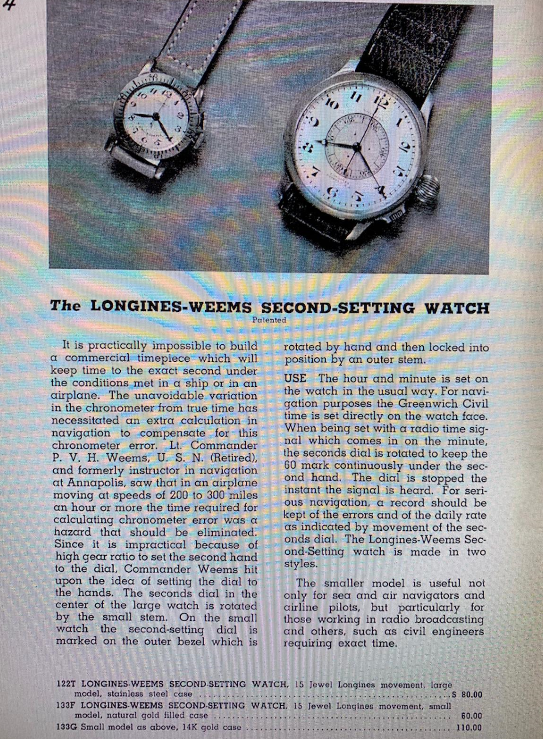
The 18.69N production models only came with a 21mm inner chapter ring. The 37.9 calibre was first used on the Weems in February 1938 and featured a transitional crown without guards and a 21mm chapter ring. Both features changed on the next known order of July 1938, with the addition of a crown guard and a larger 25mm inner chapter.
Only the Weems model featured the experimental crown setup. The so-called Hour-angle or Lindbergh used up the last stocks of the 18.69N caliber and transitioned directly to a 37.9 calibre with a protected guard version in or about 1942.
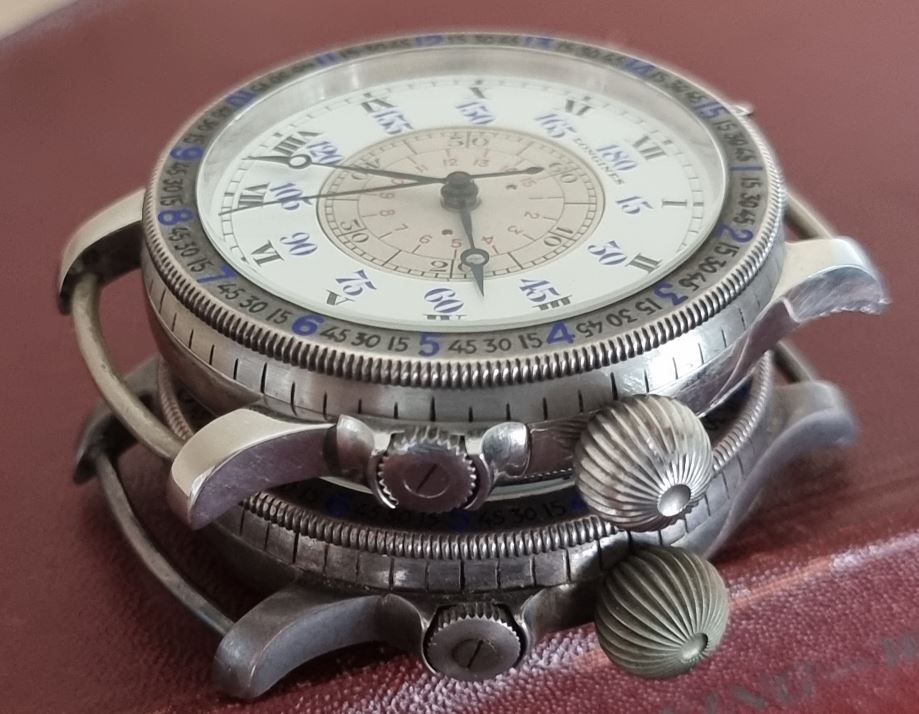
The evolutionary processes at play in the history of the large 47mm Weems development essentially stem from ongoing improvements to functionality of this pilot’s timepiece. Robust, reliable pocket watch calibres and Grand feu oversized Arabic numeral enamel dials were central to the watch.
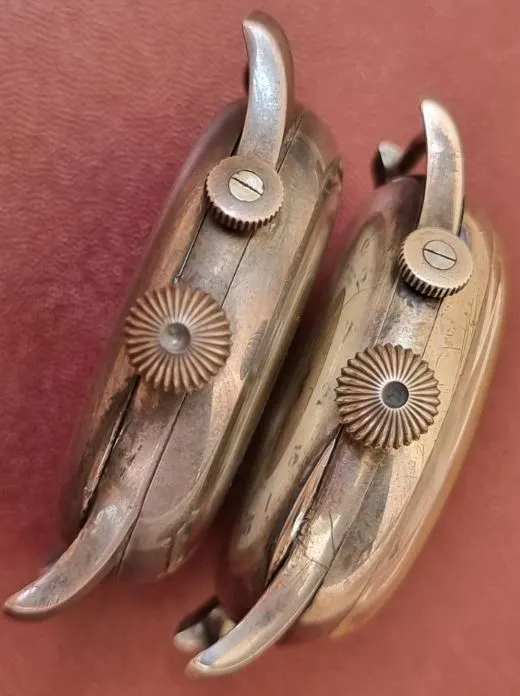
The introduction of the 37.9 calibre replaced the pin set function with an extra crown. This allowed easier adjustment and use of the second-setting function.
Incorporating an auxillary crown, crown guard protection and increasing the chapter ring size led to improvements in the second-setting capabilities of this functional tool watch.
The need to protect the crown from being knocked or bumped during flight was instantly recognized by the Longines technical team and pilot feedback giving rise to protective shoulders being added in or around July 1938.
A crown guard protecting this auxillary crown was developed within months of its predecessor’s arrival.
The few surviving transitional crown pieces without crown guards are an important reminder of the evolutionary process of the Weems model and the adaptive and purposeful transformation of history’s most famous pilot watch.
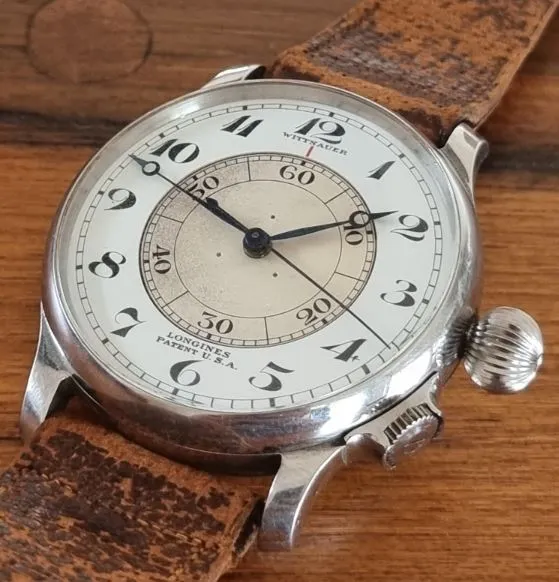

Hi Andy,
Can you see this?
https://i.imgur.com/gdDwhCM.jpg
https://i.imgur.com/uvfcaKY.jpg
This is a Japanese Imperial Navy no crown guard version.
S.
What a rare, wonderful, new, important and incredible discovery S….a new book can be written by a real and passionate master.